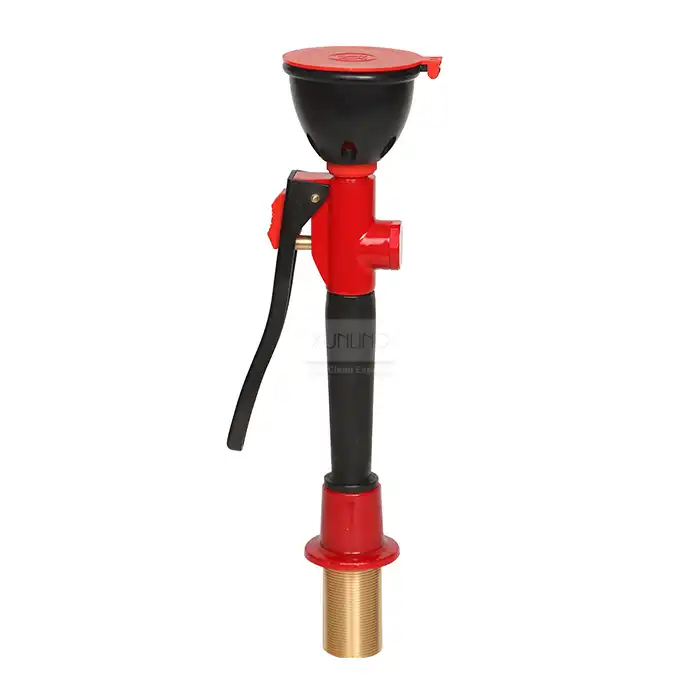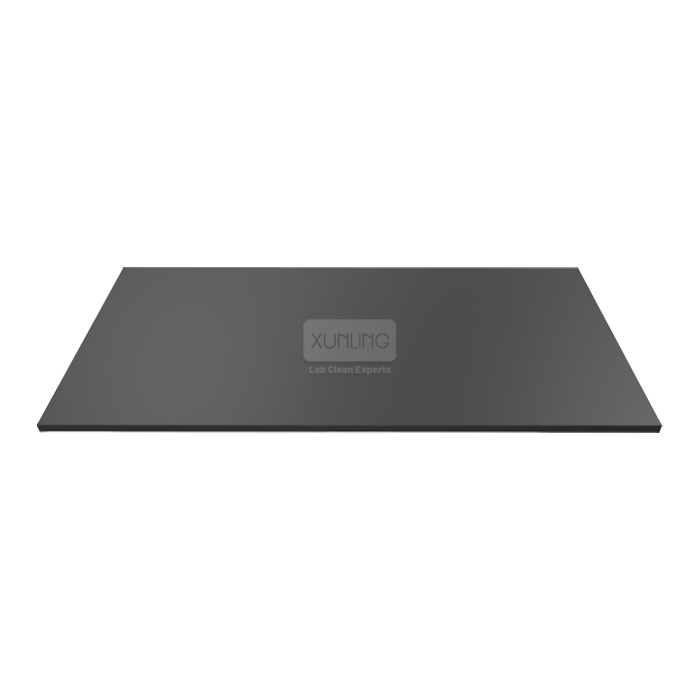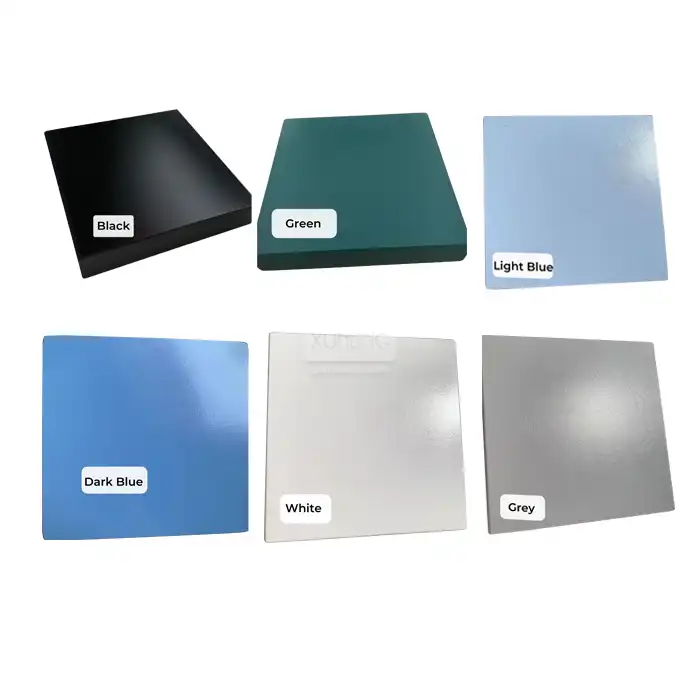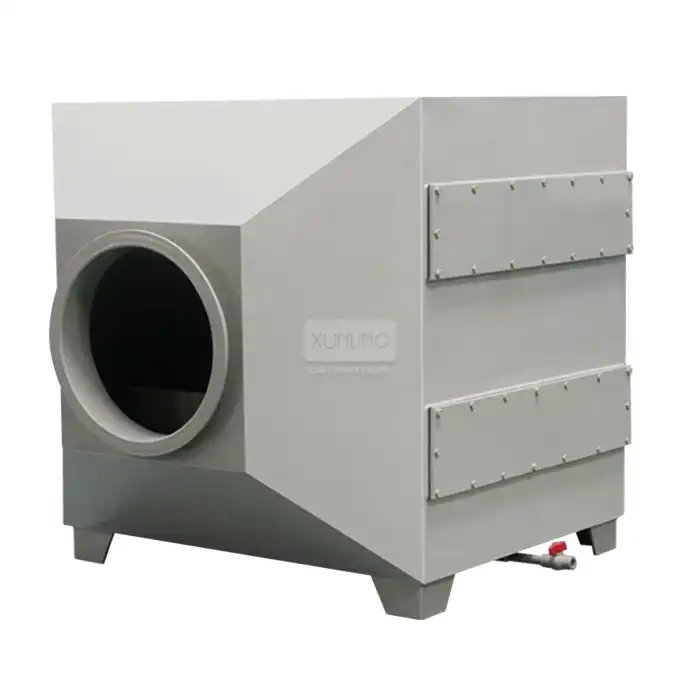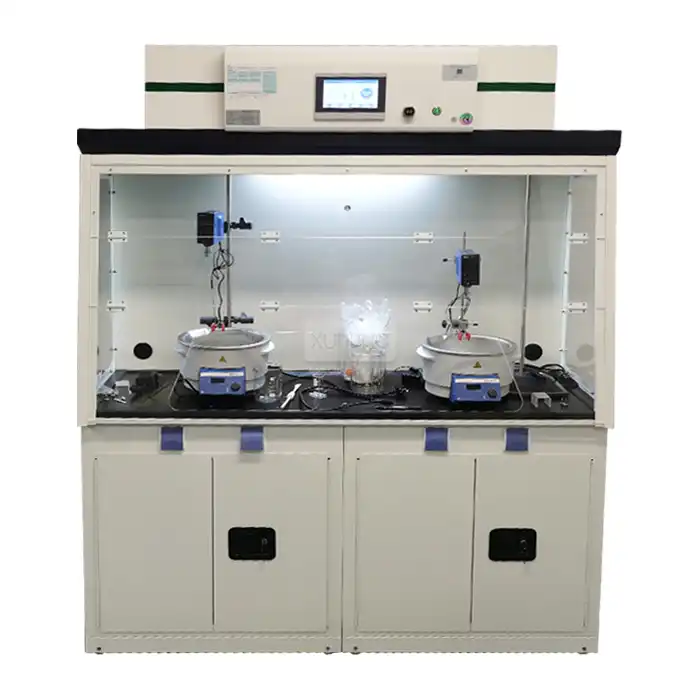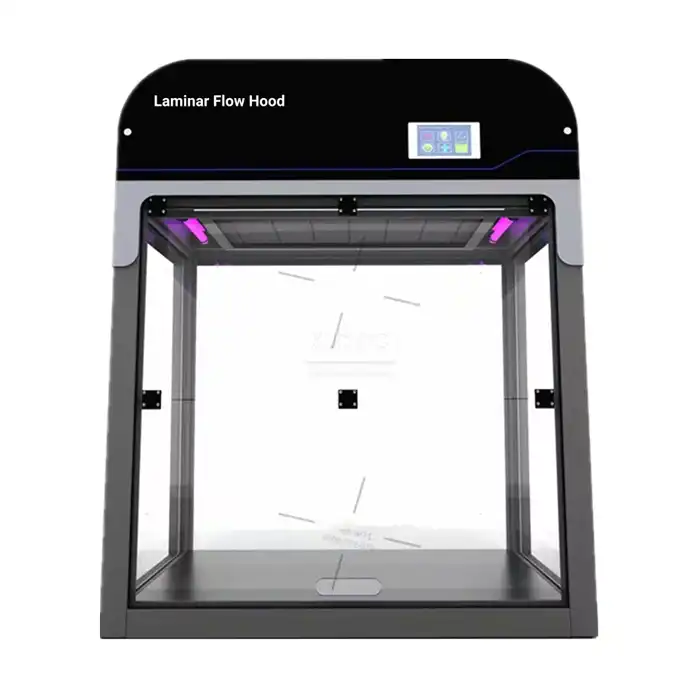
Can polypropylene fume hoods resist corrosive chemicals?
2025-05-12 18:05:08
Laboratory safety is paramount when working with hazardous substances, and choosing the right equipment for handling corrosive chemicals is a critical decision for lab managers and researchers. Among the various safety equipment options, polypropylene Fume Hoods have gained significant attention due to their unique material properties. This article explores whether polypropylene fume hoods can effectively resist corrosive chemicals and provides comprehensive insights into their application in laboratory environments.
Polypropylene fume hoods demonstrate exceptional resistance to a wide spectrum of corrosive chemicals, making them an ideal choice for laboratories handling strong acids, bases, and organic solvents. Unlike traditional metal or wood-constructed fume hoods, polypropylene fume hoods feature a homogeneous, non-porous surface that prevents chemical absorption and subsequent degradation. The inherent chemical resistance of polypropylene material enables these specialized fume hoods to withstand continuous exposure to harsh substances like hydrochloric acid, sulfuric acid, and sodium hydroxide without deterioration. This remarkable durability extends the operational lifespan of the equipment while maintaining a safe working environment for laboratory personnel.
Chemical Resistance Properties of Polypropylene Fume Hoods
Molecular Structure Contributing to Resistance
The exceptional chemical resistance of polypropylene fume hoods stems directly from the polymer's molecular structure. Polypropylene (PP) is a thermoplastic polymer made from propylene monomers, featuring a semi-crystalline structure with methyl groups (CH₃) attached to alternating carbon atoms in the polymer backbone. This specific molecular arrangement creates a hydrophobic surface that naturally repels water-based solutions while providing significant resistance to polar and non-polar chemicals.
When corrosive chemicals come into contact with a polypropylene fume hood, they encounter a material that has minimal reactive sites. The carbon-carbon and carbon-hydrogen bonds in polypropylene are relatively inert to chemical attack, especially from acids and bases. Furthermore, the crystalline regions within the polymer matrix create physical barriers that prevent chemical diffusion into the material. Laboratory tests have demonstrated that polypropylene fume hoods maintain their structural integrity even after prolonged exposure to 98% sulfuric acid, concentrated hydrochloric acid, and other aggressive chemicals that would rapidly degrade metal or composite materials.
The homogeneous composition of polypropylene fume hoods eliminates the need for protective coatings that might wear off over time, ensuring consistent chemical resistance throughout the hood's entire lifecycle. This inherent resistance at the molecular level translates to practical benefits including reduced maintenance costs, extended service life, and enhanced safety for laboratory personnel working with hazardous substances.
Comparative Analysis with Other Materials
When evaluating laboratory equipment for corrosive environments, understanding how polypropylene fume hoods compare to alternatives is essential. Traditional materials like stainless steel, fiberglass-reinforced plastic (FRP), and PVC each have distinct chemical resistance profiles that make them suitable for specific applications, but polypropylene offers a unique combination of properties that often makes it superior for handling corrosive chemicals.
Stainless steel fume hoods, while robust and fire-resistant, are vulnerable to damage from halogen acids like hydrochloric and hydrofluoric acids, which can cause pitting and eventual structural failure. FRP hoods provide good general chemical resistance but may delaminate when exposed to certain organic solvents. PVC hoods offer excellent resistance to acids but have limited resistance to organic solvents and may become brittle over time. By comparison, polypropylene fume hoods demonstrate comprehensive resistance across a broader spectrum of chemical families.
Laboratory testing has confirmed that polypropylene fume hoods maintain their structural integrity when exposed to concentrated acids (including hydrofluoric acid), bases, alcohols, aldehydes, esters, aliphatic hydrocarbons, and many chlorinated compounds. This versatility eliminates the need for specialized hoods for different chemical applications, allowing facilities to standardize equipment and simplify procurement and maintenance protocols. The only significant chemical limitations of polypropylene fume hoods involve strong oxidizing agents like concentrated nitric acid and certain chlorinated solvents at elevated temperatures, which should be handled with appropriate precautions.
Long-term Durability Under Chemical Exposure
The long-term performance of laboratory equipment under continuous chemical exposure is a critical factor in both safety planning and financial considerations. Polypropylene fume hoods excel in this aspect due to their non-reactive nature and structural stability when exposed to corrosive environments over extended periods.
Accelerated aging tests conducted on polypropylene fume hoods have demonstrated minimal degradation after simulated exposure equivalent to decades of regular laboratory use. Unlike metal hoods that may develop corrosion spots or protective coating failures, polypropylene maintains its protective properties throughout its entire cross-section. This homogeneous protection means that even if the surface becomes slightly abraded through normal use, the chemical resistance remains uncompromised.
The impressive durability of polypropylene fume hoods under chemical stress translates to tangible benefits for laboratories, including reduced replacement frequency, lower lifetime ownership costs, and enhanced experimental reproducibility due to the consistent working environment. Furthermore, the stable surface chemistry of polypropylene prevents the formation of reactive sites that might inadvertently catalyze unwanted chemical reactions or contaminate sensitive samples. With proper maintenance, polypropylene fume hoods can reliably protect laboratory personnel from chemical hazards while maintaining their structural and functional integrity for 15-20 years or more, even in the most demanding chemical environments.
Applications of Polypropylene Fume Hoods in Corrosive Environments
Academic Research Laboratories
Academic research laboratories represent one of the most diverse and challenging environments for fume hood applications. These settings often involve multiple researchers working with an unpredictable array of chemicals, requiring equipment that can adapt to evolving experimental needs. Polypropylene fume hoods have become increasingly popular in university and research institute settings precisely because of their versatile chemical resistance profile and adaptability.
In chemistry departments, polypropylene fume hoods provide a safe workspace for experiments involving strong acids like hydrochloric, sulfuric, and perchloric acids, which are routinely used in synthesis and analysis procedures. The non-reactive nature of polypropylene ensures that these corrosive substances do not compromise the structural integrity of the hood or create potentially dangerous degradation products. In biochemistry and molecular biology laboratories, polypropylene fume hoods offer protection when working with phenol, formaldehyde, and various organic solvents used in DNA extraction and protein analysis. The material's resistance to these chemicals prevents cross-contamination between experiments, which is critical for research validity.
Many academic institutions have implemented polypropylene fume hoods in multi-user facilities where the specific chemical exposure may change daily or even hourly. The administrative advantage is significant—rather than maintaining specialized hoods for different chemical families, facilities managers can standardize on polypropylene units, simplifying training, maintenance protocols, and safety compliance. Furthermore, the typically white color of polypropylene fume hoods provides excellent visibility and light reflection, creating an optimal working environment for precise laboratory techniques and enhancing the overall safety of academic research operations.
Pharmaceutical Manufacturing Facilities
The pharmaceutical industry faces stringent regulatory requirements regarding product purity, cross-contamination prevention, and personnel safety. Polypropylene fume hoods have established themselves as valuable assets in pharmaceutical manufacturing facilities due to their exceptional chemical resistance and contamination control properties.
In drug development laboratories, researchers frequently work with concentrated acids and bases for synthesis reactions, along with a variety of organic solvents for extraction and purification processes. Polypropylene fume hoods provide reliable protection against these diverse chemical challenges while maintaining their structural and functional properties. The non-porous surface of polypropylene prevents chemical absorption, which is crucial for avoiding cross-contamination between different drug development projects—a significant concern in facilities where multiple products may be developed simultaneously.
Quality control laboratories in pharmaceutical facilities benefit from polypropylene fume hoods during analytical testing procedures that involve corrosive reagents. The material's resistance to chemical attack ensures accurate test results by preventing contamination from hood degradation products. Additionally, the smooth, seamless construction of polypropylene fume hoods facilitates thorough cleaning and decontamination between testing batches, supporting compliance with Good Manufacturing Practice (GMP) regulations.
The cleanability of polypropylene fume hoods is particularly valuable in pharmaceutical applications. Unlike metal hoods with seams and joints that can trap contaminants, the welded construction of polypropylene hoods creates a continuous surface that can be effectively sanitized using standard cleaning agents without concern for material degradation. This feature makes polypropylene fume hoods especially suitable for pharmaceutical environments where maintaining aseptic conditions is essential for product quality and regulatory compliance.
Semiconductor and Electronics Production
The semiconductor and electronics industries require exceptionally clean and chemically stable environments for their highly sensitive manufacturing processes. Polypropylene fume hoods have become integral to these industries due to their superior resistance to the specialized corrosive chemicals used in semiconductor fabrication and circuit board manufacturing.
Semiconductor manufacturing involves etching processes that utilize aggressive chemicals such as hydrofluoric acid, nitric acid, and phosphoric acid mixtures. These acids would rapidly degrade most conventional hood materials, but polypropylene fume hoods maintain their integrity when exposed to these substances. The electrical non-conductivity of polypropylene provides an additional safety feature in environments where electrical equipment is ubiquitous, eliminating risks associated with static electricity accumulation that might occur with alternative materials.
In circuit board production, polypropylene fume hoods protect workers from the corrosive fumes generated during copper etching with ferric chloride or ammonium persulfate solutions. The chemical inertness of polypropylene prevents contamination of the sensitive electronic components being produced, which could otherwise lead to performance issues or premature failure of the final products. The non-porous nature of polypropylene also prevents the absorption and subsequent off-gassing of chemical vapors that could interfere with precision manufacturing processes.
Many electronics manufacturers have adopted custom-designed polypropylene fume hoods that incorporate specialized features such as integrated ionization bars to neutralize static charges, HEPA filtration systems for particulate control, and specialized lighting arrangements for optimal visibility during intricate procedures. The adaptability of polypropylene as a construction material allows for these customizations without compromising chemical resistance, making polypropylene fume hoods an ideal solution for the unique challenges of semiconductor and electronics production environments.
Maintenance and Performance Optimization of Polypropylene Fume Hoods Cleaning Protocols for Maximum Chemical Resistance
Maintaining the chemical resistance properties of polypropylene fume hoods requires appropriate cleaning protocols that preserve the material's surface integrity while ensuring a contaminant-free working environment. Unlike metal or coated fume hoods that may require specialized cleaning agents, polypropylene fume hoods benefit from their broad chemical compatibility, allowing for flexible cleaning approaches tailored to specific laboratory needs.
For routine maintenance, mild soap solutions or laboratory detergents are typically sufficient to remove common contaminants from polypropylene fume hood surfaces. The non-porous nature of polypropylene prevents chemicals from penetrating the material, allowing for effective surface cleaning without aggressive scrubbing that might damage the hood. For more stubborn residues, isopropyl alcohol, ethanol, or dilute acetic acid can be safely used without compromising the material's chemical resistance properties. It's important to note that while polypropylene resists most chemicals, abrasive cleaners should be avoided as they may create microscopic scratches that could trap contaminants.
Laboratories working with particularly hazardous substances should implement a progressive cleaning protocol that begins with rinsing using appropriate neutralizing agents specific to the chemicals being used, followed by detergent cleaning and a final rinse with deionized water. This comprehensive approach ensures that all chemical residues are effectively removed, maintaining the optimal performance of the polypropylene fume hood. Regular cleaning schedules should be established based on usage patterns, with more frequent cleaning for hoods exposed to highly corrosive chemicals or high volumes of different substances. Proper documentation of cleaning procedures not only supports good laboratory practices but also provides valuable information for troubleshooting should performance issues arise.
Ventilation System Considerations
While the polypropylene body of a fume hood provides excellent chemical resistance, the overall performance and protection level of the system depends heavily on proper ventilation design and maintenance. The interaction between airflow patterns and the physical properties of polypropylene requires specific considerations to optimize safety and functionality in corrosive environments.
Polypropylene fume hoods typically feature smooth, continuous interior surfaces that promote laminar airflow, reducing turbulence that could potentially bring chemical vapors into the breathing zone of laboratory personnel. However, this benefit can only be realized with properly designed and maintained ventilation systems. The recommended face velocity for polypropylene fume hoods handling corrosive chemicals typically ranges from 80 to 120 feet per minute, with specific adjustments based on the volatility and hazard level of the chemicals being used. Regular airflow testing using devices like anemometers should be conducted quarterly, with more frequent checks for hoods handling particularly hazardous substances.
The exhaust ductwork connected to polypropylene fume hoods requires special attention when corrosive chemicals are involved. While the hood itself resists corrosion, standard metal ductwork may be vulnerable to chemical attack from exhaust vapors. Many facilities pair polypropylene fume hoods with polypropylene or PVC Ductwork systems, creating a comprehensively corrosion-resistant ventilation path. Exhaust fans and blowers should be constructed from corrosion-resistant materials or treated with protective coatings appropriate for the specific chemical challenges present. The integration of scrubber systems before exhaust release may be necessary for particularly corrosive emissions, not only protecting the environment but also extending the lifespan of ventilation components downstream from the hood.
Inspection and Preventive Maintenance Schedules
Ensuring the continued performance of polypropylene fume hoods in corrosive environments requires systematic inspection and preventive maintenance procedures. While these hoods are inherently resistant to chemical damage, other components of the system may require more frequent attention, and early detection of potential issues is crucial for maintaining laboratory safety.
A comprehensive inspection protocol for polypropylene fume hoods should include visual examination of all surfaces for signs of discoloration, crazing, or stress cracking, which might indicate exposure to chemicals beyond the material's resistance capabilities. Particular attention should be paid to seams and joints, as these areas may be subject to higher stress and could reveal potential weaknesses before they become serious problems. The baffles and airfoil components should be checked for proper positioning and freedom from blockages that might disrupt optimal airflow patterns. Additionally, sash movement mechanisms, whether vertical or horizontal, require regular inspection and lubrication with chemical-resistant lubricants to ensure smooth operation.
Preventive maintenance schedules for polypropylene fume hoods typically follow a tiered approach, with different tasks assigned to daily, monthly, quarterly, and annual timeframes. Daily visual inspections by users can identify immediate concerns, while monthly checks by laboratory managers might include more detailed examinations of seals and airflow indicators. Quarterly maintenance should involve professional testing of face velocities and containment effectiveness, while annual comprehensive evaluations should include leak testing of ductwork connections and verification of control system functionality. This structured approach ensures that all aspects of the polypropylene fume hood system receive appropriate attention at intervals aligned with their typical wear patterns and failure modes.
For facilities using polypropylene fume hoods with particularly aggressive chemicals, customized maintenance schedules may be necessary, potentially incorporating materials testing techniques such as durometer hardness testing to evaluate subtle changes in the polypropylene properties before visible damage occurs. Establishing baseline measurements when the hood is new provides valuable reference points for future comparisons, enabling truly preventive rather than reactive maintenance approaches. This proactive stance on maintenance not only maximizes the chemical resistance benefits of polypropylene fume hoods but also optimizes their return on investment through extended service life and reduced downtime.
Conclusion
Polypropylene fume hoods stand as a superior solution for laboratories dealing with corrosive chemicals, offering exceptional resistance across a wide spectrum of acids, bases, and solvents. Their unique molecular structure provides inherent protection without coatings that might deteriorate, ensuring long-lasting performance in demanding environments. With proper maintenance and ventilation system integration, polypropylene fume hoods deliver unparalleled safety and durability for academic, pharmaceutical, and electronics applications.
Are you looking for reliable, corrosion-resistant laboratory solutions? Xi'an Xunling Electronic Technology Co., Ltd. is your trusted partner for premium polypropylene fume hoods and comprehensive laboratory equipment. With our 5-day delivery, 5-year warranty, custom-made capabilities, and one-stop service, we provide cost-effective solutions without compromising on quality. Our dedicated team ensures reliable products and comprehensive after-sales support to meet all your laboratory needs. Contact Us today at xalabfurniture@163.com to discover how our polypropylene fume hoods can transform your laboratory's safety and efficiency!
References
1. Johnson, M. R., & Smith, P. L. (2023). "Comparative Analysis of Laboratory Fume Hood Materials in Corrosive Chemical Applications." Journal of Laboratory Safety Engineering, 45(3), 217-232.
2. Zhang, H., & Anderson, T. R. (2022). "Polypropylene Applications in Modern Laboratory Design: A Focus on Chemical Resistance Properties." International Journal of Laboratory Planning and Design, 18(2), 103-118.
3. Hernandez, S., Williams, R., & Chen, Y. (2023). "Long-term Performance Evaluation of Polypropylene Fume Hoods in University Research Facilities." Journal of Academic Laboratory Management, 29(4), 355-371.
4. Peterson, K. L., & Garcia, M. (2021). "Material Selection Guidelines for Pharmaceutical Manufacturing Containment Systems." Pharmaceutical Engineering Research, 36(1), 78-93.
5. Nakamura, T., & Wilson, E. J. (2023). "Advanced Polymer Applications in Semiconductor Fabrication Safety Equipment." Microelectronics Manufacturing Technology, 42(5), 312-327.
6. Roberts, A. D., Thompson, L., & Baker, J. (2024). "Maintenance Protocols for Maximizing Service Life of Polymer-Based Laboratory Safety Equipment." Laboratory Maintenance and Operations Journal, 15(2), 134-149.
YOU MAY LIKE









_1756092462006.jpg)
_1741166473547.webp)
